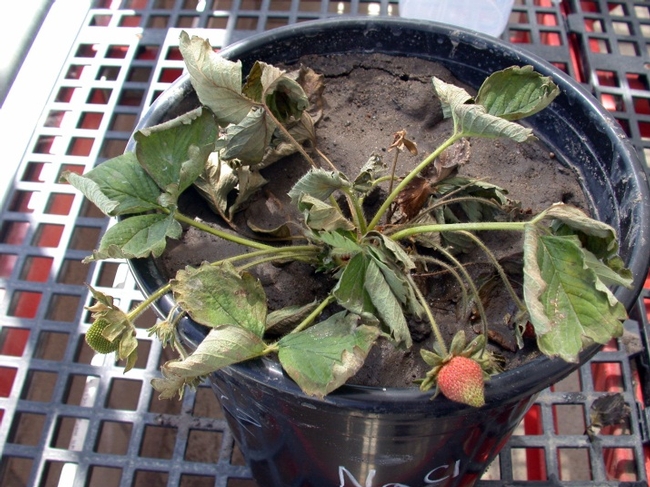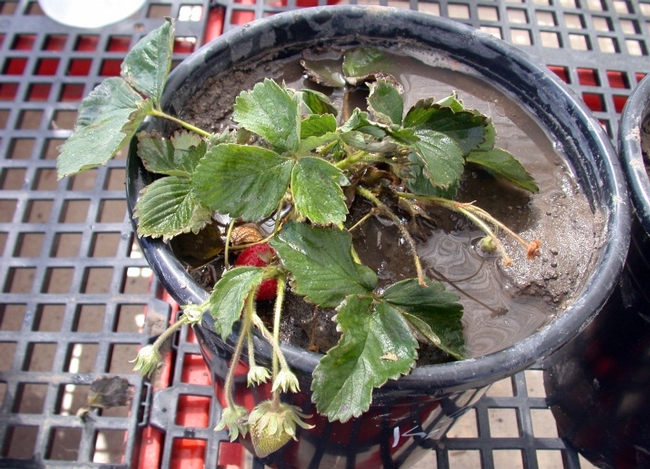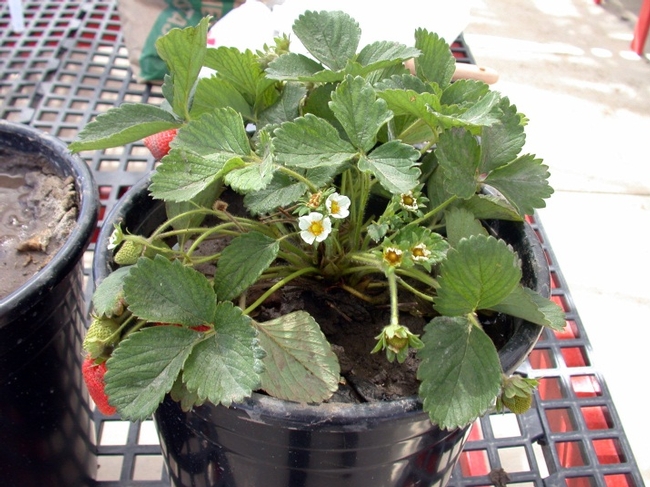We have many highly salt sensitive crops in Ventura County: strawberry, avocados, blueberries. Rainwater, the purest kind, is excellent for leaching salts, but, in years with low rainfall, salt accumulation and resulting toxicity is a big concern.
Plant reaction to salts varies among varieties, stages of growths and environmental conditions and, perhaps most importantly, with the type of salts that they are exposed to. We typically determine salinity of water and soil by measuring Electrical Conductivity (EC): the more salts are present the greater is the capacity to conduct electric current. In fact, there are guidelines for most crops that show at which EC level you would expect negative effects on plant growth and productivity. Yet there seems to be a discrepancy between the guidelines and what actually happens in the field. For example, University of California (UC) guidelines suggest that strawberry injury and yield reductions can occur at EC=1 dS/m. However, in several Ventura County fields we have healthy productive strawberry in soils with EC >4 dS/m. These large differences in tolerable EC levels result from the fact that the guidelines were developed using sodium chloride, while Ventura county soils/waters most frequently have calcium and sulfates as primary components of EC. Recent studies at UC Riverside showed the specific negative chloride effect on strawberry fruit production, while studies elsewhere have documented that sodium can also be more harmful than other ions such as calcium and potassium. Because we have calcium-rich soil, and even irrigation water often contains calcium sulfate, our crops can manage well even with EC levels well above 1 dS/m. In fact calcium and magnesium help to counteract the negative effects of sodium in the soil salt solution.
In a demonstration, we wanted to show that a very salty water (EC=20 dS/m) will have different effects on mature strawberry plants depending on the ion composition of the salts in that water. Indeed, after four days of watering with sodium chloride solution, the plants had severe injury symptoms and were dying. However, the same salt concentration of potassium sulfate only resulted in slight marginal leaf burn and mild stunting. Plants irrigated with distilled water (that imitated rain water) looked perfect, of course.
The important points of these demonstrations and field evaluations were:
- EC values in water or soil analyses only show total salinity and one needs to look at specific ions in the report to evaluate the potential effects on sensitive plants.
- Sodium and chloride are a lot more damaging that potassium and sulfate and we’re planning to evaluate several other salts and develop realistic thresholds for safe strawberry production in their presence.
- At high concentrations in the root zone fertilizers (such as potassium sulfate, a ‘safer’ salt) can injure plants and reduce their productivity
- Typical irrigation with drip lines placed between planting rows does not affect salts in the root system, unless excessive amount of water are applied to induce leaching.


